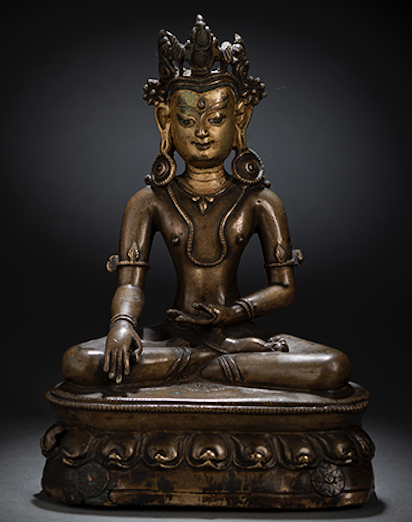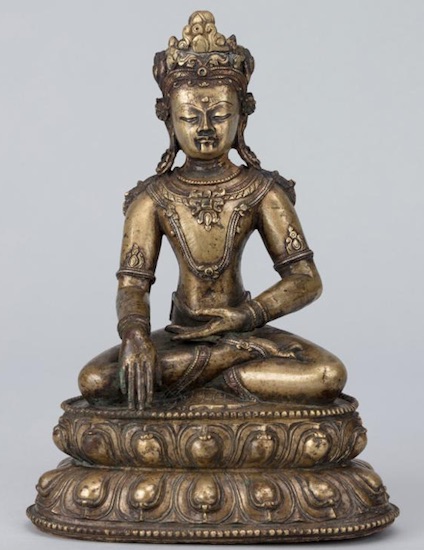1150-1250 AD, Tibet, Buddha Akshobhya, brass, 49,5 cm, photo: courtesy of Ulrich von Schroeder, Buddhist Sculptures in Tibet Volume Two, Visual Dharma Publications, p. 1163 pl. 308E, at the rNam rgyal lha khang of the sNye thang (Nyethang) monastery, (Tibet).
Although the upright vajra sceptre is missing from his left hand, this buddha is identified as Akshobhya since he belongs to a group of thatagatas (featured on pp. 1162 and 1163 of the above-mentioned publication) and the hand position corresponds to Akshobhya.
Circa 14th century, Tibet, Akshobhya, brass with turquoise and copper inlay (labelled ‘gilt bronze), 30 cm, private collection, photo on Ethereal
In his sambhogakaya aspect he has a princely/bodhisattva appearance. The short celestial scarf that flows above this buddha’s shoulders and drops behind his elbows is a feature often seen on 13th and 14th century Tibetan brass works deriving from the Indian Pala style.
13th-14th century, Tibet, Buddha (Akshobhya), bronze with silver-inlaid eyes, traces of cold gilding, 28 cm, private collection, Indian, Islamic, Southeast Asian and Himalayan Works of Art lot 537, 8th November 2023, photo on Olympia Auctions
Alternatively, the figure is sometimes framed by lotuses that flower above his shoulders and reach the ribbons of his crown.



































